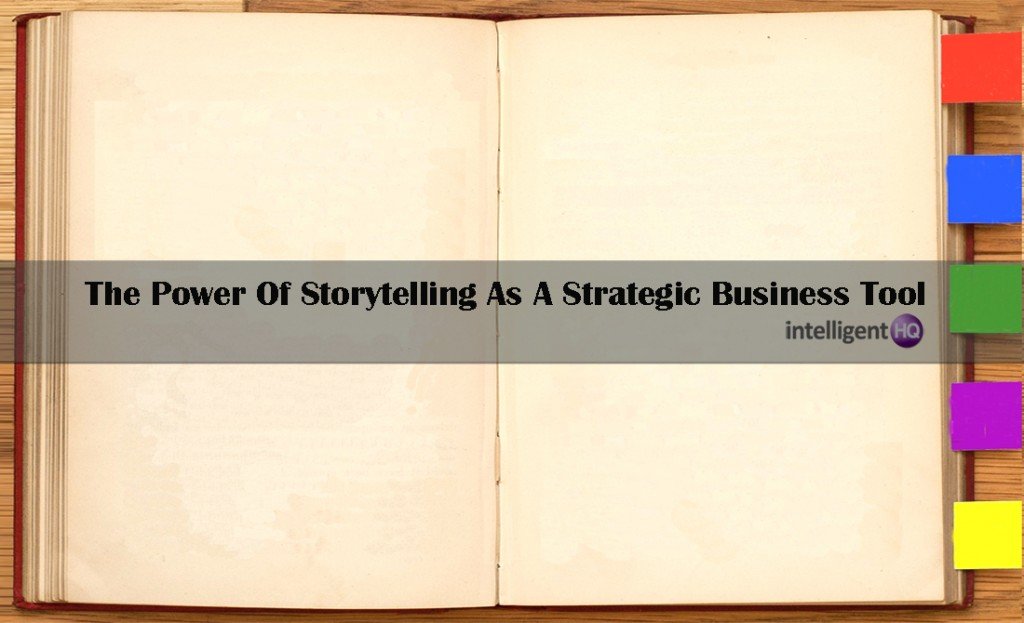Storytelling is all about winning hearts and minds. Whether the audience are customers, employees, investors, the board of directors or other stakeholders, the end goal is the same: you have to persuade them to your way of thinking. Storytelling is a powerful strategic tool for business that can help you to achieve exactly that.
Storytelling is increasingly being used by business leaders in this way. There are many good reasons for this. As Harrison Monarth (2011) explains, writing for the Harvard Business Review: “We humans have been communicating through stories for upwards of 20,000 years”.
It makes sense then that stories would be so appealing to us, and that businesses that use storytelling as a tool are better able to capture and hold our attention than those that do not or cannot. Effectively storytelling is all about persuasion. When used well it can win people over to your way of thinking. When used poorly it will probably lead to mistrust and cynicism, so getting it right is important. It is an excellent strategic tool because it serves so many different possible purposes. For example, storytelling can be used to close the deal on a sale, by showing a customer a potential new reality if they purchase the product or service. It can be used to drive monumental changes in the organisation while retaining the support of employees. It can be used by wily functional heads that want to secure capital investment for a project. It is ever more frequently used in marketing campaigns by savvy marketers. And these are just some of the uses to which storytelling can be put. In any situation where you want to move people to take action of some sort then storytelling can be used for this purpose, and it is far more effective than just telling people what to do.
How to use storytelling to address Social Media Data. Image Source: LoomStorytelling may be found at the heart of much communication that is effective. Storytelling not only runs throughout the history of people, but it is also a central component to all major world cultures. When storytelling is effective it can bring reality and understanding to a situation, and offer meaning to what is going on. With that in mind, one opportunity for storytelling to be used as a highly effective strategic business tool is for the purpose of leading people. In this regard it can be used in a multitude of different ways. Leaders can communicate who they are, why they are there and what they believe in. Storytelling by leaders can help to more effectively share a vision. As well as for these purposes, storytelling is used for sharing an important message, demonstrating organisational or personal values and underlining the importance of change. All of this can drive engagement through the roof.
This is all well and good, but knowing how to “do” great storytelling is harder. There are some characteristics that compelling stories share, however. One is that great stories are short. Long, rambling stories will quickly lose the attention of the target audience, whether that audience is employees, customers or other stakeholders. The story needs to be succinct and to get to the point quickly. That’s another important characteristic of a great story: having a point, and communicating it. Description will help to add life to a story. If the audience knows the thoughts and fears that you or your main characters had during the situation being relayed then they will relate to it more easily. Authenticity is also a critical factor. This makes your stories believable to the audience. If you’re not sure whether the story will work to make your point effectively then you can practice the story with someone who will give you honest feedback. There’s nothing wrong with that.
Somewhat of an expert on storytelling in business, writing for Fast Company, Kaihan Krippendorff (2012) argues that good stories have a set format that works. In short, Krippendorff explains that you first introduce the reality. Then you outline how conflict arrives to alter that reality. This is followed by a struggle, after which the conflict is resolved. Finally a new reality is established. If you follow this tried and tested format you should find that your storytelling is effective. And maybe you’ll live happily ever after. Just like in all the best stories.

Paula Newton is a business writer, editor and management consultant with extensive experience writing and consulting for both start-ups and long established companies. She has ten years management and leadership experience gained at BSkyB in London and Viva Travel Guides in Quito, Ecuador, giving her a depth of insight into innovation in international business. With an MBA from the University of Hull and many years of experience running her own business consultancy, Paula’s background allows her to connect with a diverse range of clients, including cutting edge technology and web-based start-ups but also multinationals in need of assistance. Paula has played a defining role in shaping organizational strategy for a wide range of different organizations, including for-profit, NGOs and charities. Paula has also served on the Board of Directors for the South American Explorers Club in Quito, Ecuador.












